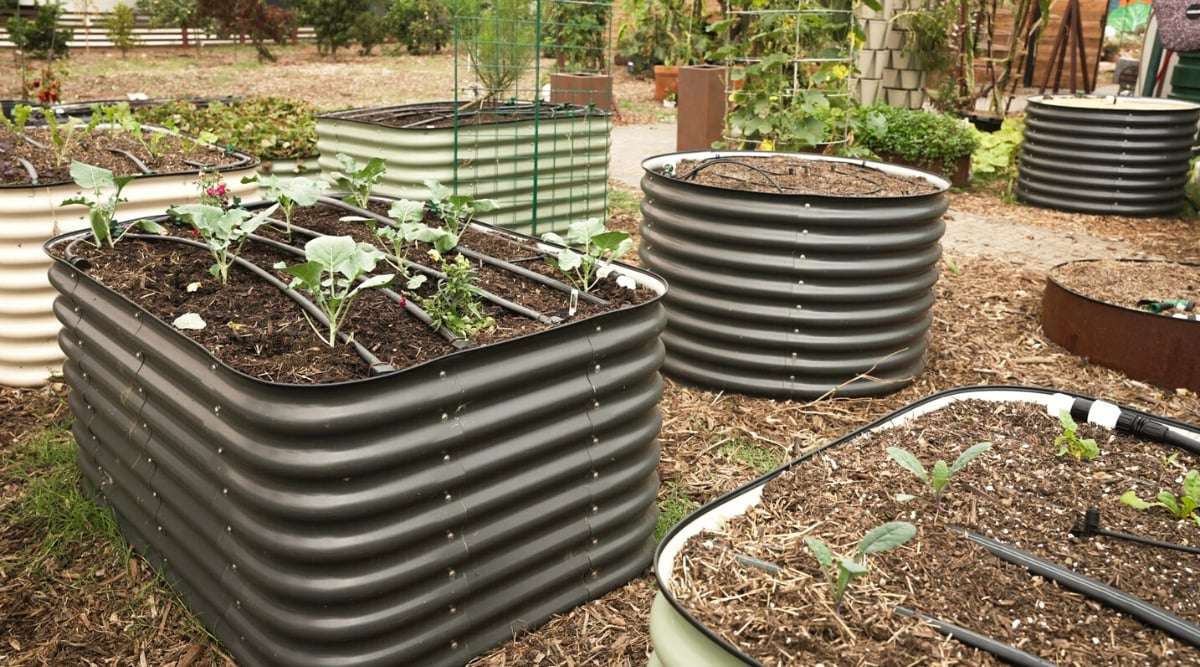Have you ever wondered if raised garden beds can get too hot? In this article, we’ll explore the topic of raised garden bed temperatures and discuss whether they can reach excessive levels. By understanding the potential challenges of heat in raised garden beds, you’ll be better equipped to make informed decisions for your garden. So, let’s dive in and discover the ins and outs of managing heat in your raised garden beds!
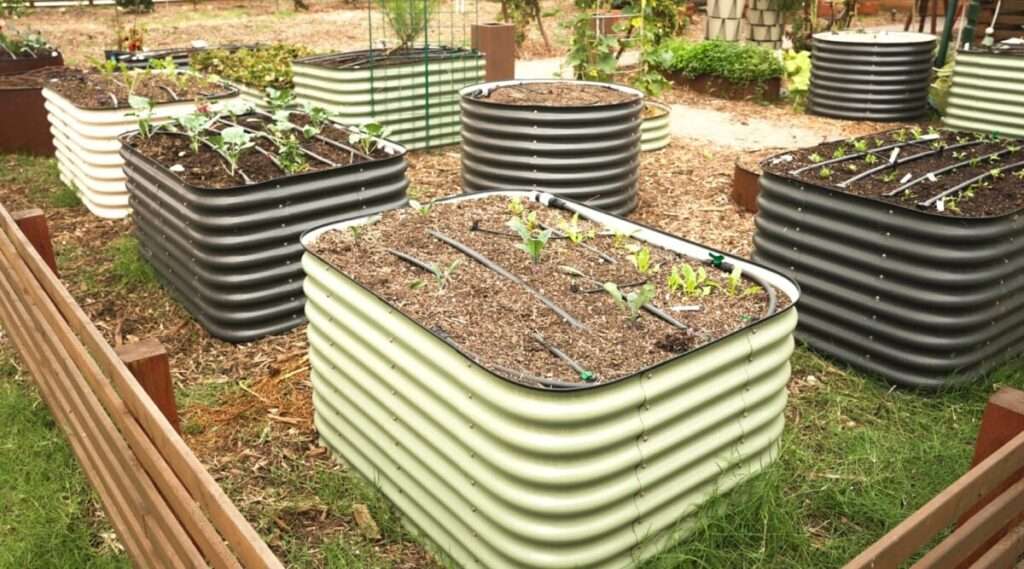
Introduction
When it comes to gardening, raised garden beds offer numerous benefits. They provide better drainage, improved soil quality, and easier access for planting and harvesting. However, one question that often arises is whether raised garden beds can get too hot. In this article, we will delve into this topic and explore the factors affecting temperature in raised garden beds, the effects of high temperatures, ways to cool them down, the importance of proper mulching, tips for watering in hot weather, selecting heat-tolerant plants, understanding microclimates, monitoring and adjusting temperature, companion planting for temperature regulation, and common mistakes to avoid. By the end of this article, you will have a comprehensive understanding of how to effectively manage the temperature in your raised garden beds and ensure the health and productivity of your plants.
Understanding Raised Garden Beds
What are raised garden beds?
Raised garden beds are essentially enclosed containers that are elevated above the ground. They typically consist of a bottomless box or frame filled with soil, allowing for more control and customization compared to traditional in-ground gardening. Raised garden beds can be constructed using various materials such as wood, metal, or plastic.
Advantages of using raised garden beds
There are several advantages to using raised garden beds. Firstly, they provide excellent drainage, preventing waterlogging and creating a healthier root environment. Secondly, raised garden beds allow for better soil quality since you can fill them with a specific mix of soil and organic matter to suit the plants you intend to grow. Thirdly, the elevated nature of these beds makes them more accessible, reducing the strain on your back and knees. Finally, raised garden beds can serve as a visual focal point in your backyard, adding aesthetic appeal to your garden.
Types of materials used for raised garden beds
Raised garden beds can be constructed using different materials, each with its own pros and cons. Wood is a popular choice due to its affordability, versatility, and aesthetic appeal. Cedar and redwood are commonly used since they are naturally resistant to rot and insect damage. Metal beds, made from materials like galvanized steel or aluminum, are durable and provide a modern look. They are also more expensive but can last longer. Plastic beds, made from recycled materials, are lightweight, cost-effective, and easy to assemble. However, they may not be as aesthetically pleasing as wood or metal.
Factors Affecting Temperature in Raised Garden Beds
Sun exposure
The amount of sunlight your raised garden bed receives can greatly influence its temperature. If your garden bed is located in an area with full sun exposure, it is likely to get hotter compared to shaded areas. The amount of direct sunlight your garden bed receives will depend on the position of your bed and any surrounding structures or trees that may cast shadows.
Type of soil
The type of soil used in your raised garden bed can also impact its temperature. Dark-colored soils, such as rich compost or loam, tend to absorb more heat from the sun, resulting in higher temperatures. On the other hand, lighter-colored soils, like sandy soil or potting mix, reflect more heat and help keep the temperature lower.
Mulching
Mulching is an effective technique to regulate temperature in raised garden beds. Applying a layer of organic mulch, such as straw, shredded leaves, or wood chips, helps insulate the soil, keeping it cooler in hot weather and reducing evaporation. Mulching also helps maintain soil moisture, improves soil structure, and suppresses weed growth.
Air circulation
Proper air circulation is essential for regulating temperature in raised garden beds. Good airflow prevents hot air from getting trapped, which can lead to increased temperatures. Ensure that surrounding plants or structures do not block the flow of air to allow for adequate ventilation. Pruning and spacing plants appropriately can also promote better air circulation.
Effects of High Temperatures on Raised Garden Beds
Plant stress and wilting
High temperatures can cause plants in raised garden beds to become stressed and wilted. When the temperature rises above their ideal range, plants can struggle to absorb water and nutrients properly. This can result in slowed growth, reduced yields, and even death in extreme cases.
Root damage
Excessive heat can also damage the roots of plants in raised garden beds. When soil temperatures become too hot, it can scorch or dry out the delicate root systems, impairing their ability to take up water and nutrients. Root damage can have detrimental effects on the overall health and productivity of your plants.
Nutrient deficiencies
High temperatures can affect nutrient availability in raised garden beds. In hot weather, plants may experience reduced nutrient uptake due to changes in soil chemistry. This can lead to nutrient deficiencies, negatively impacting plant growth and development.
Pest and disease susceptibility
Raised garden beds that are exposed to high temperatures may become more susceptible to pests and diseases. Heat-stressed plants are often weakened and more vulnerable to attacks from pests like aphids and spider mites. Additionally, some plant diseases thrive in hot and humid conditions, increasing the risk of infections.
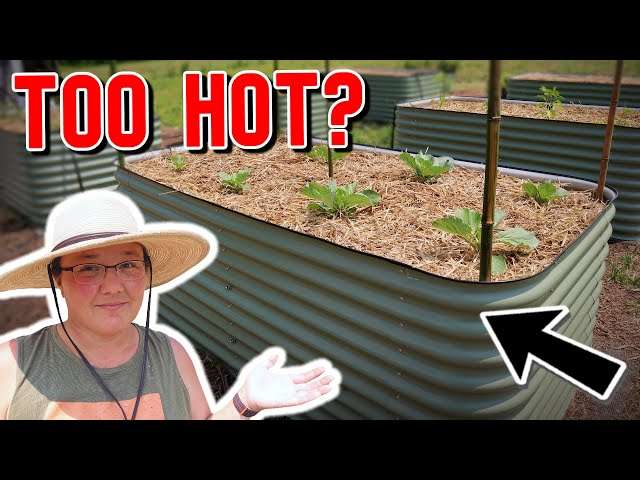
Ways to Cool Raised Garden Beds
Choosing the right location
Selecting the right location for your raised garden bed is crucial in managing its temperature. Ideally, place your garden bed in an area that receives partial shade during the hottest parts of the day. This can be achieved by positioning the bed strategically under a tree, against a building, or using shade cloth.
Providing shade
Another effective way to cool raised garden beds is by providing shade. Temporary shading options, such as shade cloth or umbrellas, can be used to protect plants during the hottest hours of the day. Just ensure that the shade does not block too much sunlight, as plants still require adequate light for photosynthesis.
Using reflective materials
Using reflective materials around your raised garden beds can help reduce heat absorption. Light-colored or reflective surfaces, such as reflective mulch or aluminum foil, can be placed around the bed to bounce off excess heat, keeping the temperature lower.
Watering techniques
Proper watering techniques can play a significant role in cooling raised garden beds. Water the soil deeply and thoroughly, ensuring that it reaches the root zone. This helps cool the soil and provides much-needed moisture for the plants. Watering in the early morning or late evening can also prevent excessive evaporation.
Importance of Proper Mulching
What is mulching?
Mulching involves applying a layer of organic or inorganic material on top of the soil in your raised garden bed. This layer acts as a protective barrier, providing various benefits to both the soil and the plants.
Benefits of mulching
Mulching offers numerous benefits for raised garden beds. It helps regulate temperature by insulating the soil and reducing heat absorption. Mulch also helps conserve moisture by reducing evaporation from the soil surface. Additionally, it suppresses weed growth, improves soil structure, and provides a finished, aesthetic look to your garden bed.
Types of mulch for raised garden beds
There are different types of mulch you can use for your raised garden beds. Organic mulches, such as straw, wood chips, or shredded leaves, break down over time and add organic matter to the soil, improving its fertility. Inorganic mulches, like plastic mulch or decorative rocks, do not break down but provide similar benefits and are low-maintenance options.
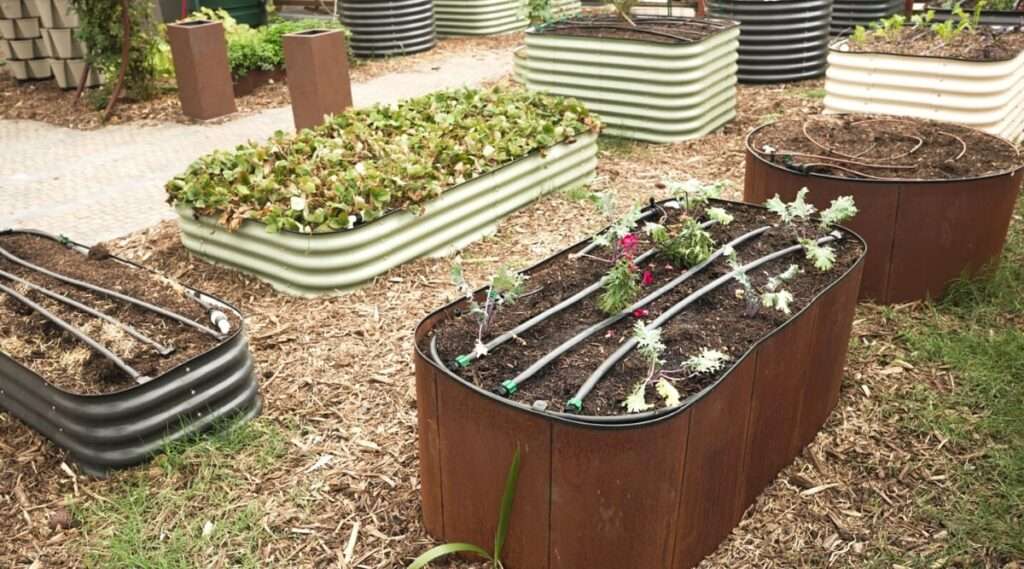
Tips for Watering Raised Garden Beds in Hot Weather
Establishing a watering routine
Establishing a regular watering routine is essential in hot weather. Monitor the moisture levels in your raised garden bed and water accordingly. Aim to keep the soil consistently moist but not overly saturated to avoid waterlogging.
Deep watering
When watering raised garden beds, it is crucial to water deeply. This means applying enough water so that it penetrates the soil and reaches the roots. Deep watering encourages the roots to grow deeper, enabling them to access water and nutrients during hot, dry periods.
Avoiding overwatering
While it is important to keep the soil moist, overwatering can be detrimental to your plants. Excessive water can lead to root rot, oxygen deprivation, and nutrient leaching. Allow the top few inches of soil to dry out slightly before watering again.
Using drip irrigation
Drip irrigation is an excellent watering technique for raised garden beds in hot weather. It delivers water directly to the plant roots, minimizing water loss through evaporation. Drip irrigation also helps prevent water splashing, which can spread diseases.
Selecting Heat-Tolerant Plants for Raised Garden Beds
Heat-tolerant vegetable varieties
Opting for heat-tolerant vegetable varieties is a smart choice for raised garden beds exposed to high temperatures. Some heat-tolerant vegetables include tomatoes, peppers, eggplant, okra, and sweet potatoes. These varieties are better equipped to handle hot and dry conditions without sacrificing productivity.
Heat-tolerant flower varieties
If you want to add some color and vibrancy to your raised garden beds, consider planting heat-tolerant flower varieties. Marigolds, zinnias, sunflowers, portulaca, and verbena are just a few examples of flowers that thrive in hot weather and can withstand high temperatures.
Heat-tolerant herbs
Herbs can be a great addition to raised garden beds, providing both culinary and aesthetic value. Some heat-tolerant herbs include rosemary, sage, thyme, oregano, and lavender. These herbs are known for their ability to withstand hot and dry conditions, making them ideal choices for raised garden beds in hot climates.
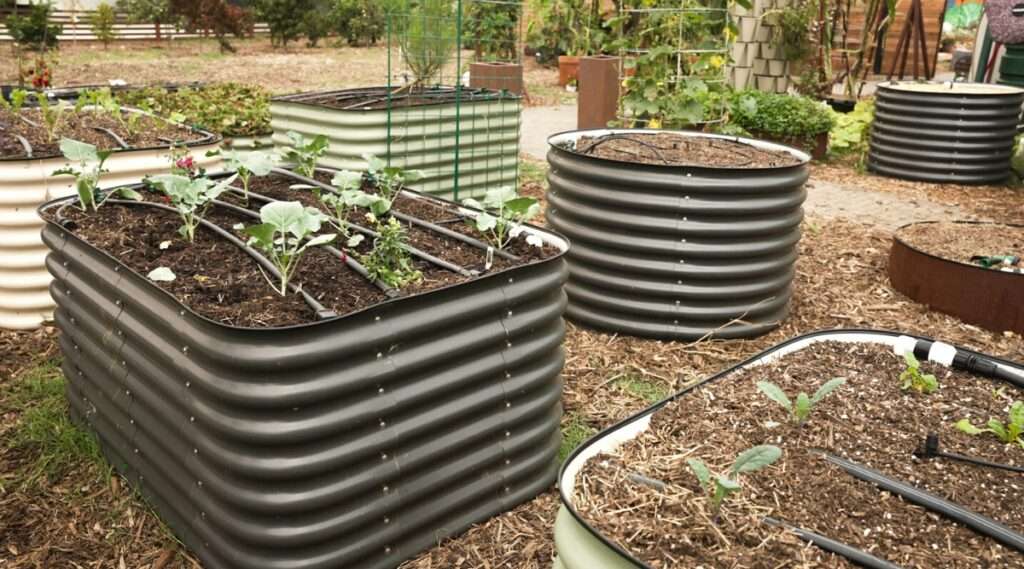
Understanding Microclimates in Raised Garden Beds
Creating microclimates
Microclimates refer to small-scale, localized areas within your garden that have different climate conditions compared to the surrounding environment. Understanding and creating microclimates can help you tailor your raised garden beds to specific temperature requirements. For example, placing plants with higher temperature preferences, such as heat-loving vegetables, in a sunny and sheltered area can create a warmer microclimate within your garden.
Choosing appropriate plants for different microclimates
By understanding the microclimates in your raised garden beds, you can select plants that are best suited to thrive in those conditions. Some plants prefer cooler microclimates, while others prefer warmer ones. By matching the plant’s temperature preferences with the microclimate, you can optimize their growth and productivity.
Monitoring and Adjusting Temperature in Raised Garden Beds
Using temperature sensors
Monitoring the temperature in your raised garden beds is crucial for maintaining optimal growing conditions. There are various temperature sensors available on the market, ranging from simple analog thermometers to digital sensors with remote monitoring capabilities. Place the temperature sensor in a shaded area within the bed to get accurate readings.
Implementing cooling techniques when necessary
Once you have monitored the temperature in your raised garden beds, you can implement cooling techniques when necessary. If the temperature is consistently too high, consider using some of the cooling methods discussed earlier, such as shade cloth, reflective materials, or adjusting watering techniques. Regularly monitoring and adjusting the temperature will help ensure the health and well-being of your plants.
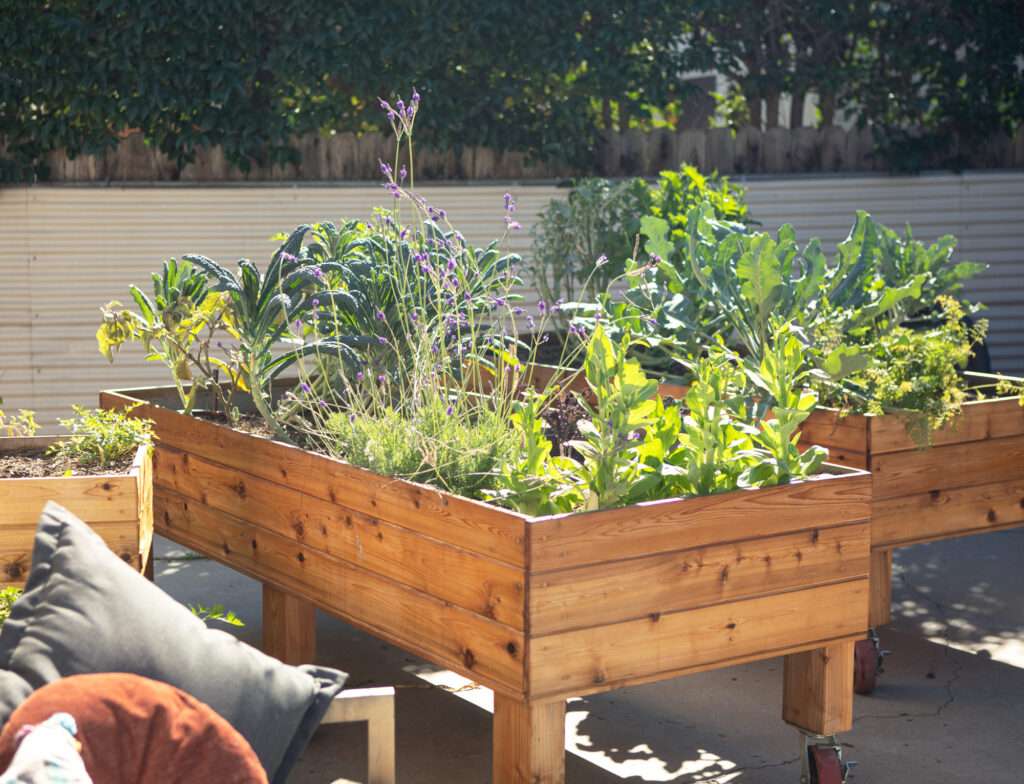
Companion Planting for Temperature Regulation
Beneficial plant combinations
Companion planting involves pairing plants that benefit each other when grown in close proximity. Some plant combinations can help regulate temperature in raised garden beds. For example, planting tall, heat-sensitive plants, such as lettuce or spinach, alongside taller and broader plants, like tomatoes or corn, can provide some shade and help cool the surrounding area.
Companion plants for shade
Certain plants act as natural shade providers and can be used as companions in raised garden beds to create cooler areas. For example, sunflowers have large, broad leaves that can provide shade to nearby plants. Other plants like tall grasses or large leafy greens can also be used strategically to create shade in specific areas of the garden.
Common Mistakes to Avoid with Raised Garden Beds
Overcrowding plants
One common mistake when using raised garden beds is overcrowding plants. While it may be tempting to maximize the limited space available, overcrowding can lead to poor airflow and increased competition for resources. Thin out plants as necessary to ensure proper air circulation and promote healthy growth.
Using darker-colored materials
Using darker-colored materials for your raised garden beds, such as dark-colored plastic or mulch, can contribute to higher temperatures. Dark colors absorb more heat from the sun, leading to increased soil and air temperatures. Opt for lighter-colored materials or reflective surfaces to minimize heat absorption.
Neglecting proper watering
Proper watering is essential for the health and well-being of your plants in raised garden beds. Neglecting watering or failing to water deeply enough can result in stress, wilting, and reduced productivity. Ensure you have a regular watering routine and monitor the moisture levels in your garden bed.
Conclusion
In conclusion, raised garden beds can indeed get too hot if not properly managed. Factors such as sun exposure, type of soil, mulching, and air circulation can all impact the temperature within raised garden beds. High temperatures can have negative effects on plants, including stress, root damage, nutrient deficiencies, and increased susceptibility to pests and diseases. However, by understanding and implementing appropriate cooling techniques, selecting heat-tolerant plants, creating microclimates, and avoiding common mistakes, you can mitigate the risk of your raised garden beds getting too hot and ensure the success of your gardening endeavors. So go ahead, create your own little oasis in the form of a raised garden bed, and enjoy the benefits of homegrown produce and a thriving garden. Happy gardening!

